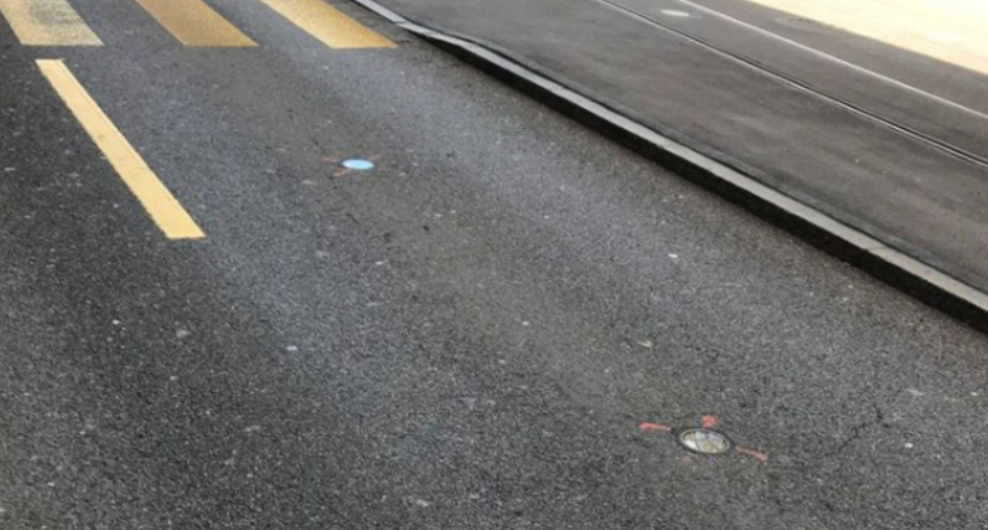1. Anticipatory control and rapid response to changing needs

A traffic management system records exactly how high the traffic volume is at a location at a particular time. Sensors are installed for this purpose - as is the case with the TAPS traffic and parking management system from LTS AG.
With the help of these sensors, it is possible to manage traffic in advance and, for example, electronically display congestion information or detours as needed. Road users then see the important information on electronic traffic boards.
3. Create parking spaces and assist in finding them.

A traffic management system is also of great importance for finding parking spaces and for creating new parking facilities (should this be necessary). Especially in large cities, finding a parking space is a problem that costs motorists up to ten minutes of additional travel time on average every day.
A full seven percent of a car's annual fuel consumption is spent in the search for a suitable space. This is accompanied by economic damage, as a look at the West shows particularly clearly. In the USA, the ever-growing parking problem cost more than 95 billion US dollars in 2017.
With the help of a traffic management system, it is possible to record precisely where particularly large numbers of road users are taking up parking spaces. For this purpose, parking spaces can be equipped with sensors that determine whether a parking space is free or occupied.
The sensors can in turn be connected to lamps that indicate the status of the parking space from a distance. This can be supplemented by electric panels that provide information on whether spaces are currently available or whether the road user needs to move on. This shortens the search time for drivers immensely.
Based on all the data collected, the operator can also find out whether and to what extent he has Parking space planning has to adapt. The TAPS analysis tool from LTS, for example, helps them to do this. Additional app technologies make communication between driver and customer even more convenient.
4. Relieve on the environment
If the amount of time spent driving around in search of a parking space is reduced, this naturally also benefits the environment. On average, a car emits around 140 g of carbon dioxide per kilometer driven. Added to this is particulate matter, which is produced by exhaust fumes and tire wear, among other things. The better traffic is managed, the lower the environmental impact.
If, for example, the traffic light phases are adapted to the traffic volume in addition to the parking facilities, the ecosystem can slowly but surely breathe a sigh of relief. The data recorded by the traffic management system makes exactly that possible.
It is also important how road closures are handled. This often results in traffic jams. Thanks to the records of the traffic management system, it is possible to analyze exactly how to reroute in order to cause as few traffic jams as possible.
5. Less traffic jams and detours due to maintenance

It is not uncommon for maintenance work to be the reason for the closures. With the induction loops that have been used for a long time, this is a very costly undertaking. Modern traffic management systems use sensors, such as the TAPS sensors.
Like any system, they need to be replaced from time to time, but this is only necessary after ten years. They operate energy-autonomously, which is why neither batteries nor accumulators need to be replaced. It is also possible to configure the sensor and perform updates remotely. Maintenance-related road closures can thus be significantly reduced.
6. Plan ahead and expand as required

Not only the actual state on the roads can be recorded with the help of a road traffic management system. Trend calculations and historical analyses are also possible thanks to this system. This in turn enables predictive control. As a result, upcoming maintenance work can be planned in such a way that it interferes with traffic as little as possible.
Our TAPS ground sensors have an in-house intelligence that can be expanded as required according to the calculated trends. It thus creates, among other things, the basis for:
Adaptive traffic management
Optimal planning of detour and maintenance work
Traffic counts
Temporary use of various light signals
7. Fast installation compared to induction loops.
As already mentioned, thanks to traffic management systems with sensors, the duration of maintenance-related road closures can be significantly reduced. But the installation itself is also much faster. For example, induction loops have to be laid over a large area, which also results in correspondingly large and long-lasting closures.
When ground sensors are installed, regular operations are only interrupted for a comparatively short time. This can reduce both congestion and losses in terms of parking revenue. It takes just 30 minutes to install the TAPS sensors. There is no need to tear up large areas of road, as the sensors are installed selectively. A targeted drilling is sufficient. This not only saves time, but also money.
8. Lower costs

A road user spends around nine percent of his or her total driving time in traffic jams. The resulting direct and indirect costs can add up to several billion Swiss francs per year at the national level. Those who rely on the support of traffic management systems can significantly reduce traffic jams and the resulting horrendous costs.
A small comparison between sensor technology and the induction loops used for decades should also be mentioned here. The use of sensors brings a saving of around 50 percent. The reasons for this include less complex installation and low maintenance.
Managing traffic and parking with the help of ground sensors
At LTS AG, we are committed to developing complex technological solutions that facilitate traffic and energy management. The needs of urban society are increasingly changing. We know what challenges the infrastructure will face in the future and therefore provide our customers with future-oriented solutions. The traffic and Park Management by our TAPS sensors is part of it.
Dank unserer jahrzehntelangen Erfahrung am Markt und unserer fundierten Fachkenntnisse liefern wir Lösungen, die den höchsten Industriestandards entsprechen. Für nähere Informationen bezüglich unserer Systeme oder eine ausführliche Beratung zu individuellen Anliegen sind wir über unser Contact form erreichbar.






)
)